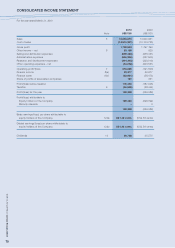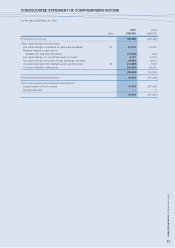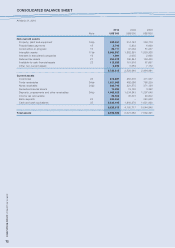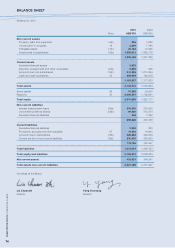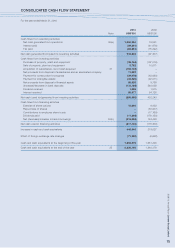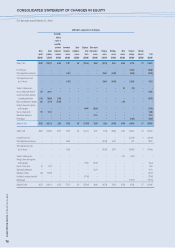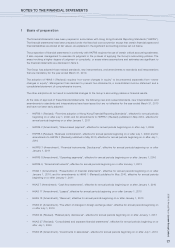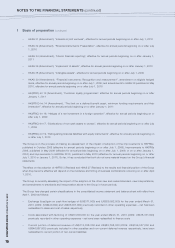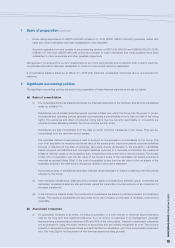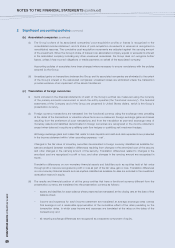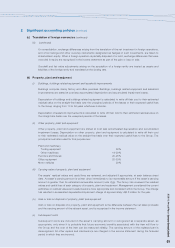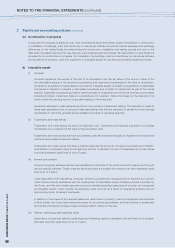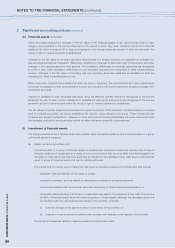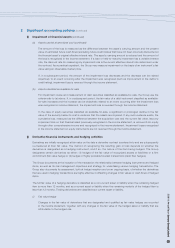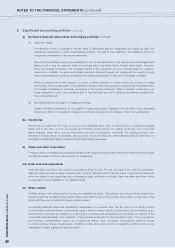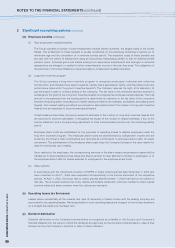Lenovo 2010 Annual Report Download - page 82
Download and view the complete annual report
Please find page 82 of the 2010 Lenovo annual report below. You can navigate through the pages in the report by either clicking on the pages listed below, or by using the keyword search tool below to find specific information within the annual report.
2009/10 Annual Report Lenovo Group Limited
80
NOTES TO THE FINANCIAL STATEMENTS (continued)
2009/10 Annual Report Lenovo Group Limited
80
2 Significant accounting policies (continued)
(b) Associated companies (continued)
(ii) The Group’s share of its associated companies’ post-acquisition profits or losses is recognized in the
consolidated income statement, and its share of post-acquisition movements in reserves is recognized in
consolidated reserves. The cumulative post-acquisition movements are adjusted against the carrying amount
of the investment. When the Group’s share of losses in an associated company equals or exceeds its interest
in the associated company including any other unsecured receivables, the Group does not recognize further
losses, unless it has incurred obligations or made payments on behalf of the associated company.
Accounting policies of associates have been changed where necessary to ensure consistency with the policies
adopted by the Group.
(iii) Unrealized gains on transactions between the Group and its associated companies are eliminated to the extent
of the Group’s interest in the associated companies; unrealized losses are eliminated unless the transaction
provides evidence of an impairment of the assets transferred.
(c) Translation of foreign currencies
(i) Items included in the financial statements of each of the Group’s entities are measured using the currency
of the primary economic environment in which the entity operates (the “functional currency”). The financial
statements of the Company and of the Group are presented in United States dollars, which is the Group’s
presentation currency.
(ii) Foreign currency transactions are translated into the functional currency using the exchange rates prevailing
at the dates of the transactions or valuation where items are re-measured. Foreign exchange gains and losses
resulting from the settlement of such transactions and from the translation at year-end exchange rates of
monetary assets and liabilities denominated in foreign currencies are recognized in the income statement,
except when deferred in equity as qualifying cash flow hedges or qualifying net investment hedges.
All foreign exchange gains and losses that relate to bank deposits and cash and cash equivalents are presented
in the income statement within ‘other operating expenses – net’.
Changes in the fair value of monetary securities denominated in foreign currency classified as available-for-
sale are analyzed between translation differences resulting from changes in the amortized cost of the security
and other changes in the carrying amount of the security. Translation differences related to changes in the
amortized cost are recognized in profit or loss, and other changes in the carrying amount are recognized in
equity.
Translation differences on non-monetary financial assets and liabilities such as equities held at fair value
through profit or loss are recognized in profit or loss as part of the fair value gain or loss. Translation differences
on non-monetary financial assets such as equities classified as available-for-sale are included in the investment
revaluation reserve in equity.
(iii) The results and financial position of all the group entities that have a functional currency different from the
presentation currency are translated into the presentation currency as follows:
– assets and liabilities for each balance sheet presented are translated at the closing rate at the date of that
balance sheet;
– income and expenses for each income statement are translated at average exchange rates (unless
this average is not a reasonable approximation of the cumulative effect of the rates prevailing on the
transaction dates, in which case income and expenses are translated at the rates on the dates of the
transactions); and
– all resulting exchange differences are recognized as a separate component of equity.


